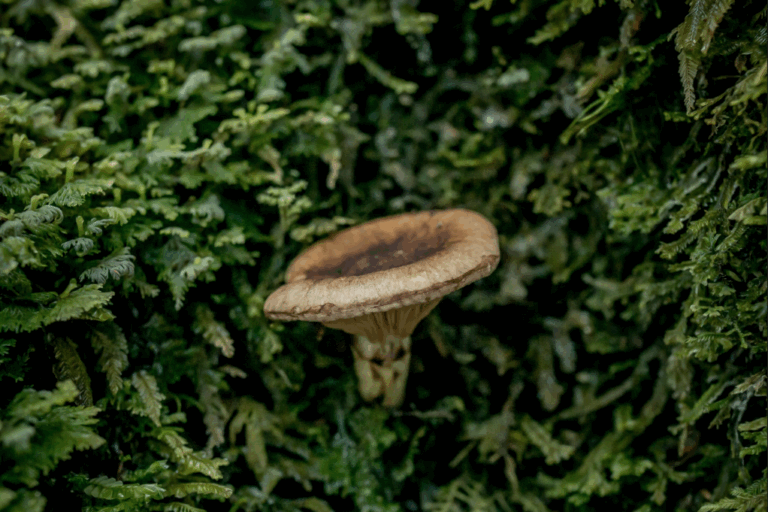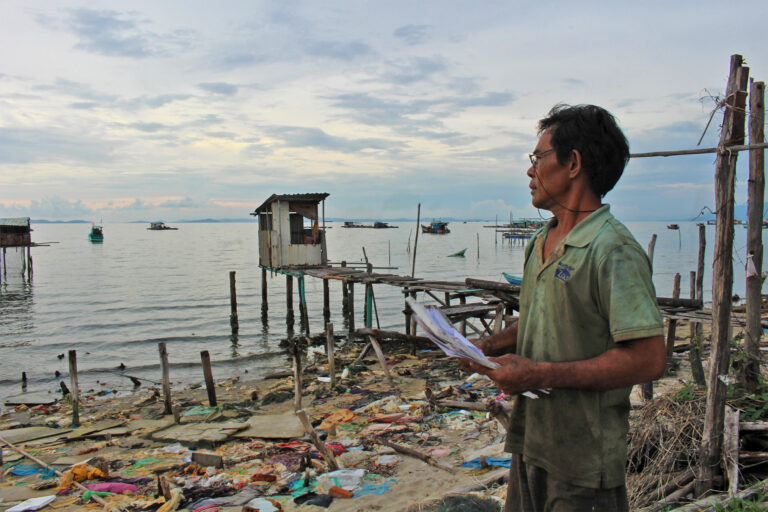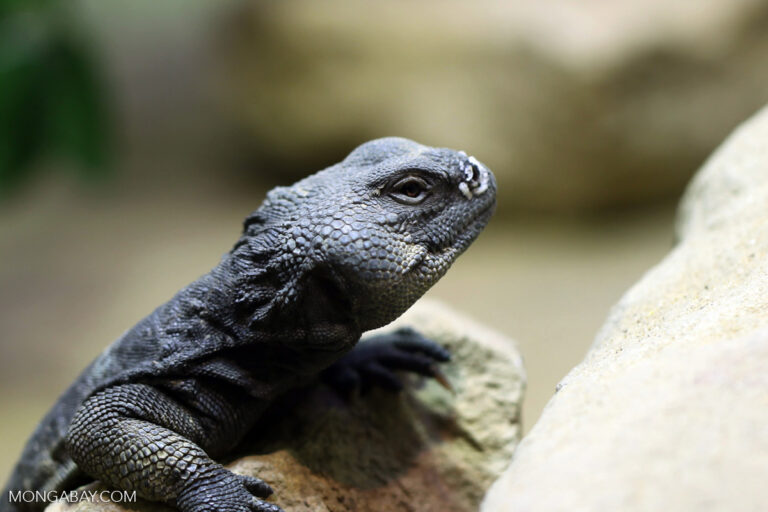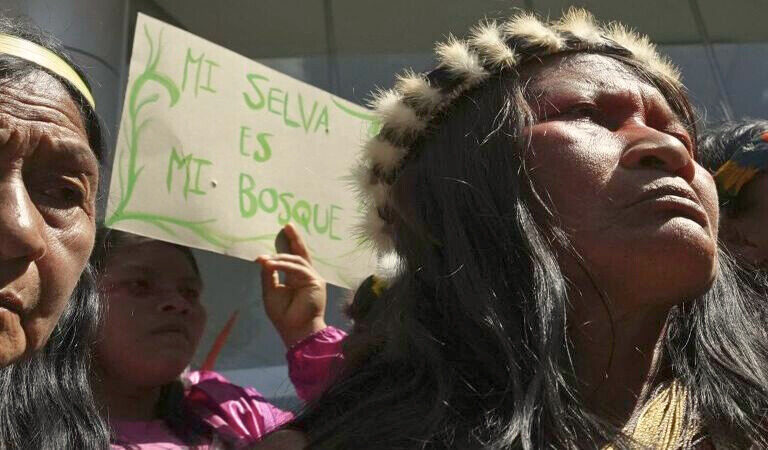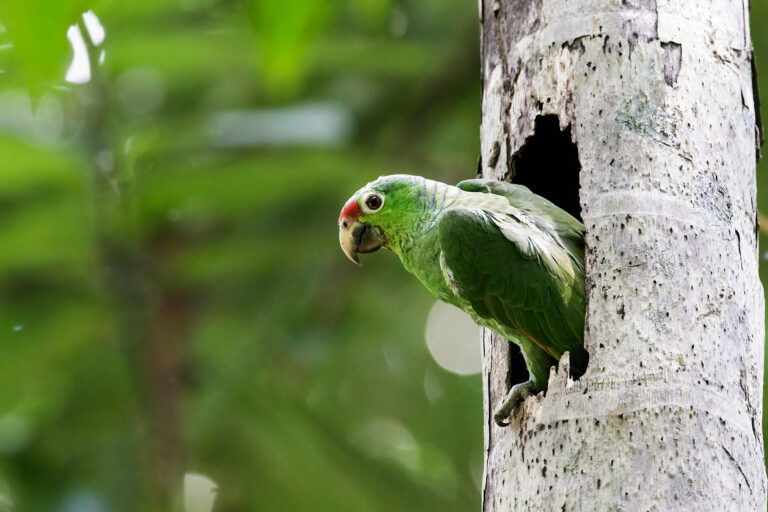- Kolombangara is one of more than 900 islands that make up the Solomon Islands, where timber is a major export and logging continues at 19 times the sustainable rate.
- The island’s lowland forests have been intensively harvested since the mid-1960s; only the steep forests above 400 meters (1,300 feet) remain largely intact.
- If forests do not have enough time to recover between bouts of logging, scientists say, there will be cascading consequences for timber resources, biodiversity and ecosystem services on which local communities depend.
- They’re calling for improved national forest management policies that regulate reentry logging and incorporate land-use planning; conservation partners are also seeking formal protection of the island’s customary upland natural forests and investigating forest restoration techniques.
Kolombangara Island forms a 30-kilometer (19-mile) circle of green in the Solomon Sea. One of more than 900 islands that make up the Solomon Islands, it is fringed by coral reefs and dominated by a volcanic peak, which rises to 1,770 meters (5,800 feet). Ravines of more than 75 river catchments radiate from the steep caldera rim to the sea.
The island is forested, but there is a curious delineation in forest type. The island’s lowland forests have been intensively harvested since the mid-1960s. Consequently, roughly three-quarters of the island’s lowland forest has been converted to commercial timber plantation, primarily eucalyptus and teak. Only the steep forests above 400 m (1,300 ft) remain largely intact. Although logging is not permitted above this altitude, a lack of legal enforcement leaves these areas under constant threat of illegal timber extraction.
Recent research on the capacity of Kolombangara’s forests to recover after logging highlights the challenges facing both logged and unlogged forests.
The timeline for natural regeneration is decades; not even half a century is sufficient time for forest structural components to recover fully, according to findings published in Tropical Conservation Science in June. Other studies have shown that forest damage is so extreme in some logged areas of Kolombangara that natural regeneration of understory plant species to pre-logged levels is unlikely without active restoration work.
According to the researchers, if forests do not have enough time to recover between bouts of logging, there will be cascading consequences for timber resources, biodiversity and ecosystem services on which local communities depend. Furthermore, the island’s remaining unlogged forests merit increased protection to ensure that illegal logging incursions don’t go unchallenged.
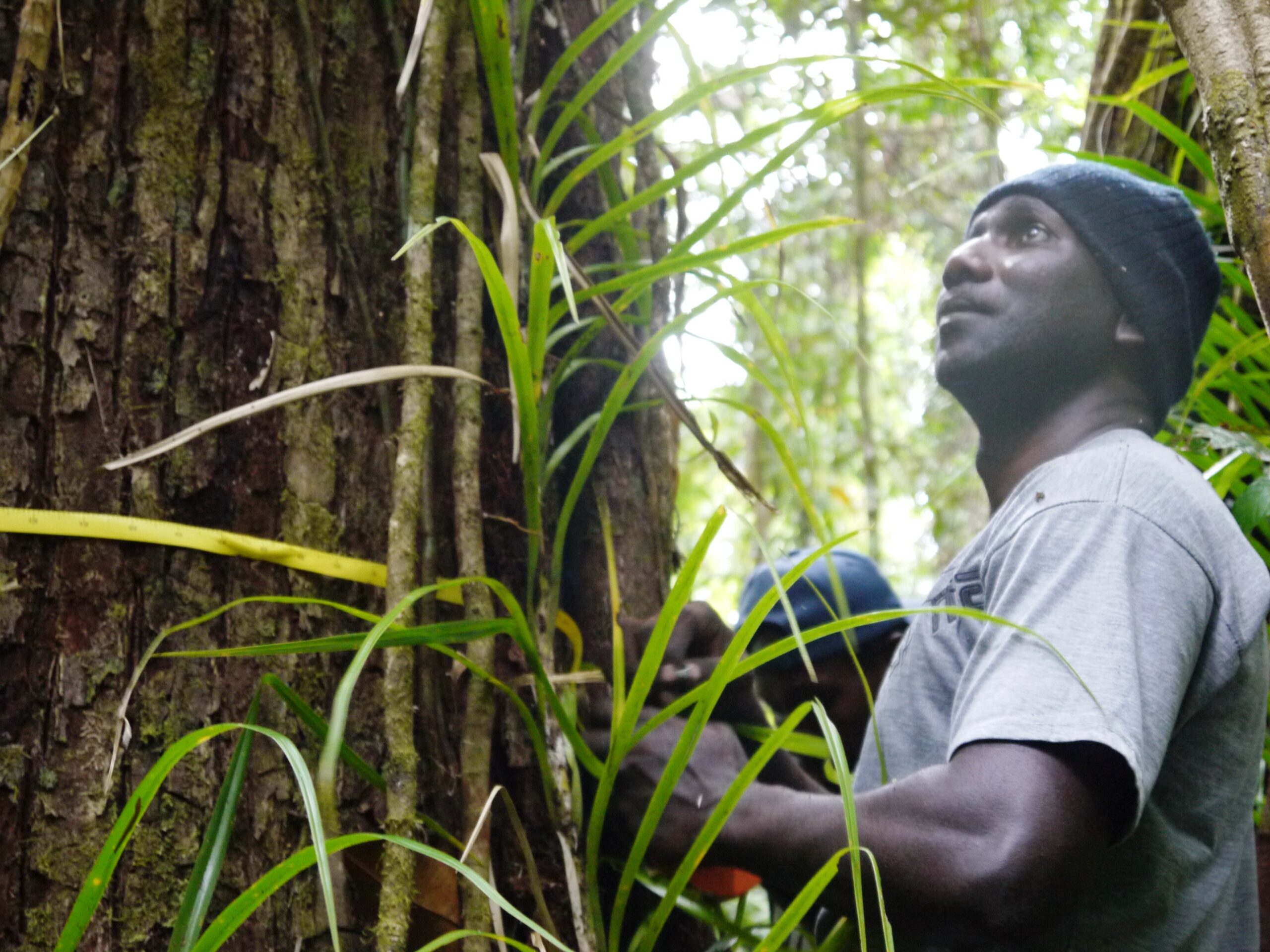
Forest degradation
Excessive logging is not confined to Kolombangara; it occurs across the archipelago. Timber is the Solomon Islands’ largest export. According to a 2018 Global Witness report, foreign companies are now driving logging to more than 19 times the sustainable rate. In 2017, the country exported more than 3 million cubic meters (106 million cubic feet) of logs.
With logging levels so far beyond sustainable levels, much of the country’s lowland forests have now been harvested. Between 2002 and 2020, the Solomon Islands lost 1,220 square kilometers (470 square miles) of primary forest, representing a decrease of more than 6% in primary forest cover, according to Global Forest Watch.
“The intensity of logging in the Solomons perhaps is one of the highest in the Asia-Pacific region,” Eric Katovai, an environmental biologist at the University of the South Pacific, Fiji, who has led multiple studies looking at the impacts of logging on forest ecosystems in the country, told Mongabay.
Katovai said he’s concerned that this excessive harvesting is undermining forests’ capacity for natural regeneration, which could result in a collapse in timber resources — a devastating blow for the economy and future generations — and in the loss of important habitat for biodiversity.

Allowing sufficient time for structural and functional recovery is vital. Two-fifths of global biodiversity is associated with forest canopies, so the higher a forest’s structural complexity, the more available niches for species to occupy. Functional restoration of primary productivity, gas exchange and evapotranspiration increases a forest’s capacity to regulate local climate, cycle nutrients, store carbon, and purify water and air.
Logging undermines these processes. During selective logging, liana networks often pull down neighboring trees; machinery compacts soil; and logging roads, trails and storage areas erode the understory, allowing invasive plants and animals into forest edges.
On Kolombangara, the legacy of logging is impacting biodiversity. “Ongoing studies show that the bird community [on Kolombangara] is actually moving inland, moving to higher forest, especially to the lower montane altitude because of disturbance,” Katovai said. “Locals have reported that the Kolombangara white-eye [Zosterops murphyi] came right down to the coast before logging activities started, but after logging, they only find white-eyes up at around 400-plus meters above sea level.”
One of the archipelago’s most iconic endemic species is the Solomon Island giant skink (Corucia zebrata). They are found throughout the main islands, and can reach a length of 80 centimeters (32 inches). However, in recent years, they too are seen less frequently on Kolombangara. “They have perhaps moved to areas of forest that are relatively intact,” Katovai said.

Interconnected forests
Unsustainable loss of trees also threatens the downstream resources on which people depend. A 2020 study modeled the impacts of logging scenarios on Kolombangara’s surrounding coral reefs and fisheries. They found that even low-intensity logging would increase sedimentation of reefs and thus negatively impact subsistence fisheries. If the logging rate were to increase, the researchers calculated that almost 90% of the surrounding coral reefs would be affected by sedimentation. Another study in 2018 found that logging Kolombangara’s intact forests would lead to unsustainable soil erosion and contamination of drinking water far in excess of international quality standards.
Making sure that landowners and local communities fully recognize the benefits of intact forests for their ecosystem services and non-timber resources is vital, Ferguson Vaghi, program manager of Kolombangara Island Biodiversity Conservation Association (KIBCA), told Mongabay. The association is working with local communities to develop alternative livelihoods, such as ecotourism, coconut oil and carbon credits.
KIBCA and other conservation partners are seeking formal protection of the island’s customary natural forests above 400 m, an area that spans 70 km2 (27 mi2) of mostly intact forest. These relatively isolated areas are infrequently monitored and subject to frequent illegal logging incursions. According to Vaghi, securing protection of this portion of upland forest as a national park would provide sustainable and equitable benefits for communities on the island, while maintaining critically threatened biodiversity and ecosystems.
“Virtually the whole lowland area has been logged, so we must keep the upper belt of forest above 400 meters to ensure we have a balanced environment that retains the ecosystem services that we need,” Vaghi said. So far, meetings with hundreds of Indigenous landowners have met with support for the protected area.

While community-backed conservation areas will help, Katovai said there is an urgent need to improve national forest management policies. There are no current policies that sufficiently regulate reharvesting of logged areas so that forests have adequate time to recover. Such regulations could be governed by an improved land-use planning system. “Landscape management is paramount for the Solomon Islands. We need to say: this is where you log; this is where you don’t log; this is where we have a conservation area.”
Nonetheless, Katovai said he is hopeful about governmental discussions on policies that would place an onus on logging companies to initiate post-logging forest restoration work. But he said such policies will be meaningless unless they focus on restoring natural forests. If companies only replant commercial timber species, the damaging process of harvesting, replanting and reharvesting will perpetuate.
Katovai is now experimenting with forest restoration techniques to find out what methods work best on Kolombangara. In the absence of improved governance, it is important, he said, to know what works and to involve landowners and other community stakeholders so that they are armed with knowledge on how to restore their land themselves.
“Today, there’s a lot of young educated people in the communities, so I think better days are coming,” Katovai said. “The new generation are trying to manage their resources well, so I think the days for unsustainable logging in the Solomons is approaching an end.”
Banner image: Collecting a wood core of a giant Terminalia brassii, a sought-after timber species in a study plot on Kolombangara. Image courtesy of Eric Katovai
Citations:
Katovai, E., Katovai, D. D., Campbell, M., Laurance, S. G., Edwards, W., & Laurance, W. F. (2021). Structural recovery of logged forests in the Solomon Islands: Implications for conservation and management. Tropical Conservation Science, 14, 1-13. doi:10.1177/19400829211028125
Katovai, E., Burley, A. L., & Mayfield, M. M. (2012). Understory plant species and functional diversity in the degraded wet tropical forests of Kolombangara Island, Solomon Islands. Biological Conservation, 145(1), 214-224. doi:10.1016/j.biocon.2011.11.008
Katovai, E., Edwards, W., & Laurance, W. F. (2015). Dynamics of logging in Solomon Islands: The need for restoration and conservation alternatives. Tropical Conservation Science, 8(3), 718-731. doi:10.1177/194008291500800309
Wenger, A. S., Harris, D., Weber, S., Vaghi, F., Nand, Y., Naisilisili, W., … Jupiter, S. D. (2020). Best‐practice forestry management delivers diminishing returns for coral reefs with increased land‐clearing. Journal of Applied Ecology, 57(12), 2381-2392. doi:10.1111/1365-2664.13743
Wenger, A. S., Atkinson, S., Santini, T., Falinski, K., Hutley, N., Albert, S., … Jupiter, S. D. (2018). Predicting the impact of logging activities on soil erosion and water quality in steep, forested tropical islands. Environmental Research Letters, 13(4), 044035. doi:10.1088/1748-9326/aab9eb
Katovai, E., Katovai, D. D., & Laurance, W. F. (2020). Potential restoration approaches for heavily logged tropical forests in Solomon Islands. Shaping the Future of Small Islands, 219-232. doi:10.1007/978-981-15-4883-3_12
FEEDBACK: Use this form to send a message to the author of this post. If you want to post a public comment, you can do that at the bottom of the page.







